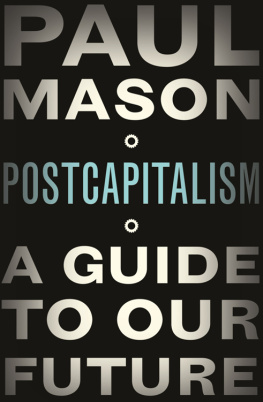A sociology of the mentally disordered offender
A sociology of the mentally disordered offender
Tom Mason and Dave Mercer
First published 1999 by Pearson Education Limited
Published 2014 by Routledge
2 Park Square, Milton Park, Abingdon, Oxon OX14 4RN
711 Third Avenue, New York, NY 10017, USA
Routledge is an imprint of the Taylor & Francis Group, an informa business
Copyright 1999, Taylor & Francis.
The rights of Tom Mason and Dave Mercer to be identified as authors of this Work have been asserted by them in accordance with the Copyright, Designs and Patents Act 1988.
All rights reserved. No part of this book may be reprinted or reproduced or utilised in any form or by any electronic, mechanical, or other means, now known or hereafter invented, including photocopying and recording, or in any information storage or retrieval system, without permission in writing from the publishers.
Notices
Knowledge and best practice in this field are constantly changing. As new research and experience broaden our understanding, changes in research methods, professional practices, or medical treatment may become necessary.
Practitioners and researchers must always rely on their own experience and knowledge in evaluating and using any information, methods, compounds, or experiments described herein. In using such information or methods they should be mindful of their own safety and the safety of others, including parties for whom they have a professional responsibility.
To the fullest extent of the law, neither the Publisher nor the authors, contributors, or editors, assume any liability for any injury and/or damage to persons or property as a matter of products liability, negligence or otherwise, or from any use or operation of any methods, products, instructions, or ideas contained in the material herein.
ISBN 13: 978-0-582-31741-3 (pbk)
British Library Cataloguing-in-Publication Data
A catalogue record for this book is available from the British Library
Library of Congress Cataloging-in-Publication Data
Mason, Tom, 1950
A sociology of the mentally disordered offender / Tom Mason and
Dave Mercer.
p. cm.
Includes bibliographical references and index.
ISBN 0-582-31741-X (pbk.)
1. Mentally handicapped offendersUnited StatesPsychology.
2. Mentally handicapped offendersServices forUnited States.
3. Mentally handicapped and crimeUnited States. I. Mercer,
Dave, 1957- . II. Title.
HV6791.M365 1999
364.3dc21 98-51542
CIP
Typeset by 35 in 10/12pt New Baskerville
We would like to dedicate this book to our good friend and mentor Professor Joel Richman. Not that this book is worthy of him but that he taught us not to be afraid of our own ideas and to fight every inch of the way. Surrender is not an option.
Having worked in clinical practice, education and research for a quarter of a century with mentally disordered offenders we have come to realise that traditional perspectives in psychiatry and psychology are but attempts to understand difficult issues in this highly complex field of practice. Whilst not dismissing the role that these approaches offer we now conclude that they are both limited, and limiting, unless we have the courage to break out of their bondage and search for differing realities. This current project was born in the dark tunnel between Moorfields and Sandhills whilst travelling on the underground train in Liverpool, UK when bursting into the daylight the idea came to us. The mentally disordered offender is socially constructed from a fusion of psychiatry and criminality, from a merging of mental disorder and crime, and from a melding of the pathology of the monstrous with the symbolics of the soul. We cannot explain the extremes of human behaviour without using as a reference point, or anchorage, other human spirits, and only when we achieve this relational perspective can we hope to fathom the depths of depravity to which a few plummet. This sociological view allows us to glimpse into our own psyche and create meaning through its association with the social body.
Not being sociologists, in an academic sense, we do not claim the grand mastery of their professional conceptual frameworks, but having long been keen students of sociology we have learnt to scratch beneath the veneer and to penetrate the masks of pretence to search for differing levels of meaning. We are aware that the acquisition, and exercise, of power lies at the core of the 'forensic' enterprise by all professional groups (but not necessarily to the same extent by all individuals within them) and that the mentally disordered offender is used as a pawn in their game. In this current project we have attempted to reveal some, but by no means all, of the contradictions, tensions, and dilemmas that litter the conflict zone between forensic psychiatry and society. In this we have probably done sociology a disservice and for that we apologise; we may have done psychology some mischief but that is not deliberate; and we hope that we have done psychiatry a favour but expect that they will miss the point.
Chapter 1
Introduction
In attempting to establish a sociological understanding of the mentally disordered offender, contextualised within society, we need to investigate three fundamental areas of our social fabric. Firstly, we need to analyse crime. We need to know as much of our fascination for it as our fear of it. We need to be equally aware of our attempts to control it, as we are regarding our role in producing it. And, whilst we will concentrate on our abhorrence of crime, we must not forget our desire to be a part of it. Secondly, it will be required of us to address the nature of mental abnormality, its construction and function. We will need to assess our perceptions, beliefs, and prejudices in relation to its uses and abuses in social terms. It will be required of us to understand the vested interests in relation to the sphere of mental disorder and analyse the affiliations of power that are constructed to manage it. Thirdly, we must attempt to penetrate that, as yet, veiled area that lies between crime and mental disorder, the social domain in which resides the mentally disordered offender. There are few signposts in this area and so we must navigate carefully.
Furthermore, we will need to draw on the relations between all three provinces and meticulously analyse the structural processes that draw them together. It will be our task to identify the sources and mechanics of these arrangements and to build our thesis carefully, step by analytical step. We will need to understand the processes by which the mentally disordered offender is constructed from the domains of law and psychiatry and also to investigate the social structures by which the mechanics effect this construction, and derive their driving force. There is little doubt at the outset of this project that we will need to employ different strategies and focus on novel aspects of our social lives in order to make visible a sociology of the mentally disordered offender.
What becomes apparent in building this thesis is the extent of binary opposition usage. The discourse of opposites, conflicts, contradictions, tensions, and dilemmas, are strewn throughout the text. Words such as paradoxes, solutions, and dialectics are peppered within the manuscript, just as phrases such as "on the other hand', 'alternatively', and 'so too' appear to counter balance every argument. This is significant because the very nature of the mentally disordered offender lies between; namely, the law and psychiatry. The nature of our work is, thus, to draw from these two domains and create a third arena, the middle-ground, which inevitably must be qualified with counter proposals.









